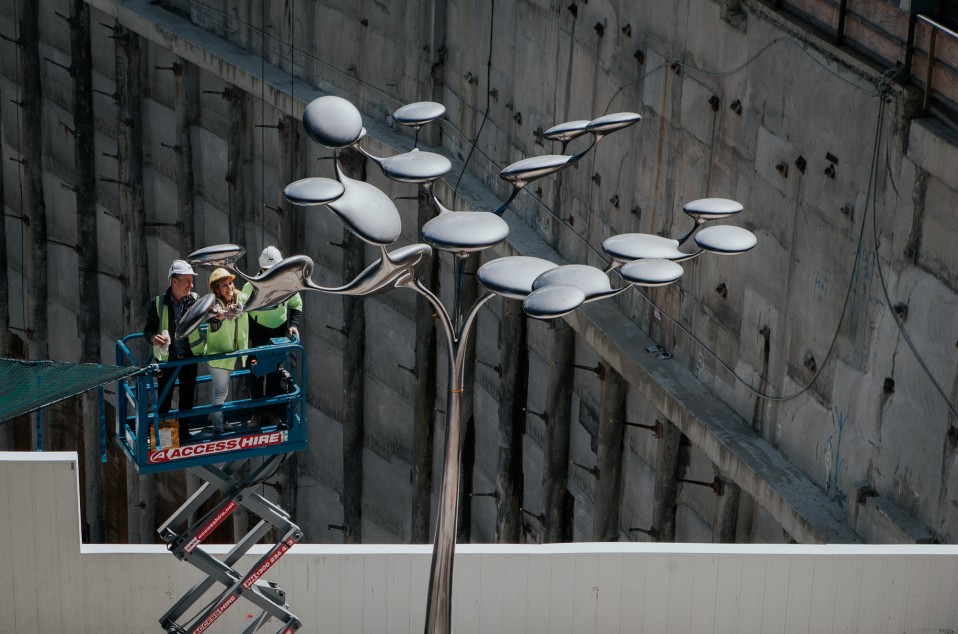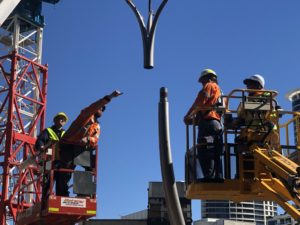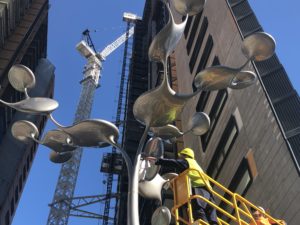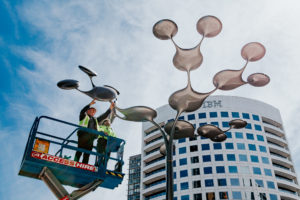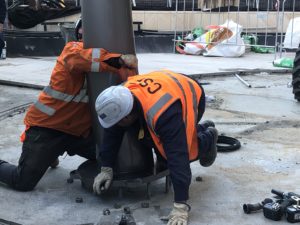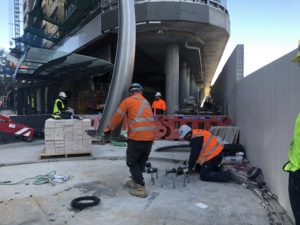“TREE” has already passed the pub test with Mirvac’s workers on site, and promises to be a very successful and much loved artwork. Its soft organic forms, inspired by nature hark back to Brancusi, and American kinetic artist George Rickey and Alexander Calder- who both influenced New Zealand artist Phil Price. The 7 meter high kinetic work – a gracious carbon fibre and steel structure which is now the centre piece of the new public space joining two residential towers.
The hypnotic movement of its discs in response to wind and gravity are mesmerizing. You are immediately taken by the question how does it work? It looks kind of magical and mechanically impossible – and this is Phil’s secret mechanism that uses compound axes hidden in the sculpture, allowing the components to revolve and dip at the same time. Not only that, all 18 of the leaf elements can behave differently at the same time!
His work is perfect for a public space like St Leonards Square because it is a sophisticated high tech design, but is also very safe and vandal proof. You cannot climb this tree.
No matter what position its in or where you are viewing it from, TREE always looks harmonious and balanced. Creating a successful composition in any 2D or 3D artwork is always an artists challenge but when you also add movement – a whole other set of visual challenges arise. As a curator, this is one thing buildings can’t do, no matter how sculptural or beautiful they are – they cant move! If they do we’re in trouble! And this is why I like kinetic public art so much. It moves in response to microclimate and its always refreshing itself to the viewer.

